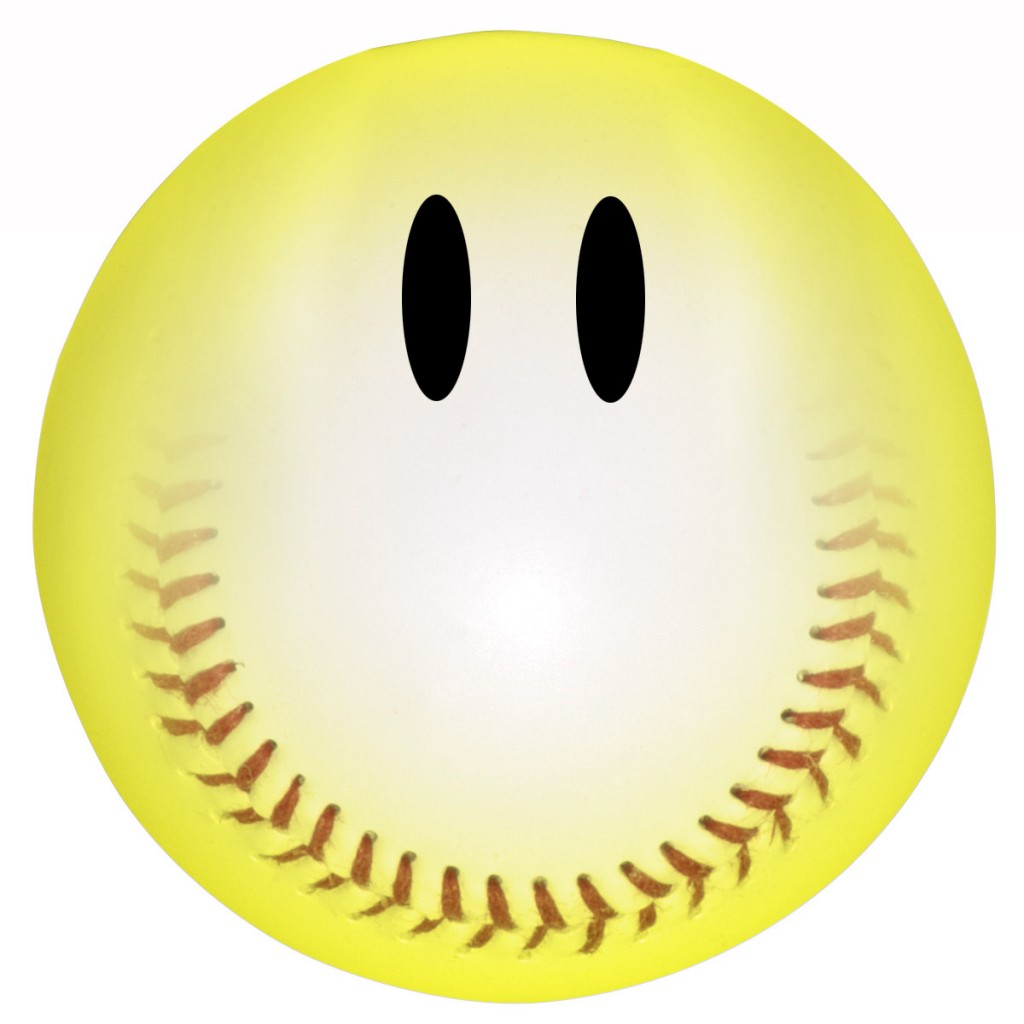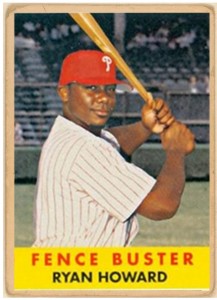Ryan Howard the 33-year old powerhouse cleanup hitter for the Philadelphia Phillies has been in a slow decline ever since his 2006 season when he hit 58 homeruns and won the Most Valuable Player award.
Howard, the Phillies’ first baseman, was given a massive and controversial long-term contract extension of $125 million just as his hitting weaknesses were exposed. Opposing teams got smart and shifted their players to the right side of the field, where as an extreme pull hitter, Howard was more likely to hit the ball. Late-in-game left-handed relief pitchers were brought in to throw him breaking balls in the dirt that he would often flail helplessly away at. He walked less and struck out more, no longer the feared hitter that he once was.
Howard hit a low point in a Phillies season ender when he snapped an Achilles tendon as he futilely ran to first base on a ground out that was the final out of the last game of the 2011 National League Division Series in his hometown of St. Louis. The torn tendon was compounded by a severe infection that kept him out of the first 70 games of the 2012 season. By the time Howard returned to the lineup with a hobbled step, the Phillies were far out of contention and playing with lackluster enthusiasm.
Recently, Howard told Jayson Stark of ESPN, “When I first came in the league, I had a lot of expectations for myself. I didn’t worry about what other people’s expectations were.” But, he told Stark, sitting out for almost half a season gave him time to reflect on what had happened to his mindset over the course of his career: “I let the outside expectations kind of get to me. I was too hard on myself. I was trying to force things to happen…getting caught up in the hype, caught up in all the expectations from people. And then I started to put a little bit more [burden] onto myself, trying to please everybody.”
The pressure Howard put on himself to win every game by trying to get the big hit had led to some bad habits at the plate. Instead of relaxing and waiting for his pitch, he lost his patience and pitchers started getting him out with pitches out of the stroke zone. The Phillies’ manager Charlie Manuel said of the slugger, “And when he starts going bad, he digs a bigger hole for himself, because he thinks he’s got to be carrying the team.”
As difficult as it was not being able to play baseball for the first time in 25 years, the forced time out did give Howard a chance to reevaluate what sort of perspective he wanted to bring to the game. “I just want to go back and have fun, just be free of mind and not worry about it,” he said.
Howard is attempting a cognitive shift from trying to please his teammates and fans by taking the burdens of a suffering team on his shoulders, to playing the game he loves for the sheer fun of it. In psychological terms it is a move from extrinsic motivation (doing something to win external rewards such as grades, praise or financial return) to intrinsic motivation (doing what you love to please yourself). Much of the research done in the last few decades associates this sort of self-generated intrinsic motivation with enhanced comprehension, creativity, cognitive flexibility and achievement.
And although Howard and the Phillies fans won’t know until the actual season is underway how successful his current mindset will be, so far it seems to be working. Howard had a great spring training, tying the League for most homers. He’s even had more hits than strikeouts, something that he hasn’t done over a full season since 2006.
In interviews with over 36 high achievers for our book, we found that the people we spoke with, too, motivated themselves by the love of their work. Although they excelled in a variety of fields, sports, business, arts entertainment and science, they not only expressed a passion for what they do, but credited their success, in great part, to their love of craft. Yogi Berra, baseball legend told us, “All I ever wanted was to be a ballplayer.” Martina Navratilova, tennis champ, said, “I loved the thrill of putting all that work and practice into action. I played to win but I still had fun.” Ken Jennings the winningest game show champ in history said, “The passion that came from [playing on Jeopardy!] contributed to my winning and helped me see for the first time that doing something you love really can change your life.” Anne Netrebko, opera superstar told us, “When I studied I was not thinking, ‘I’m going to be the One.’ I loved the music so much my goal was simply to sing well. That’s it. That’s what I wanted to do.”
It’s a lesson for us all.
And yet, like Howard, even the job or career we once loved can wear us down. Long hours, office politics and financial stress can make work feel like, well, work. We can forget why we are doing what we do. But as Howard’s example shows us, if we take some time to revaluate our careers and pay more attention to what we actually like about what we do and less time wallowing in what we don’t like, we can rekindle some passion. And hopefully get better at what we do.
Perhaps Howard summed it up best when he said, “Sometimes, it takes that down time to really make you stop and ask yourself, ‘What’s actually going on?’ And that doesn’t just have to be on an athletic stage. That’s just everyday life. People can get so bombarded in work, sometimes people need to get away from it…and re-focus. I had a ton of time to think. And I gained a whole new appreciation for the game.”
[Disclaimer: Josh is a native Philadelphian and as a die-hard fan has a vested emotional interest in Ryan Howard’s success.]
This article first appeared in Psychology Today
Buy the book. Signup for “The Art of Doing” free e-newsletter. Follow us on Twitter. Join “The Art of Doing” Facebook Community.


